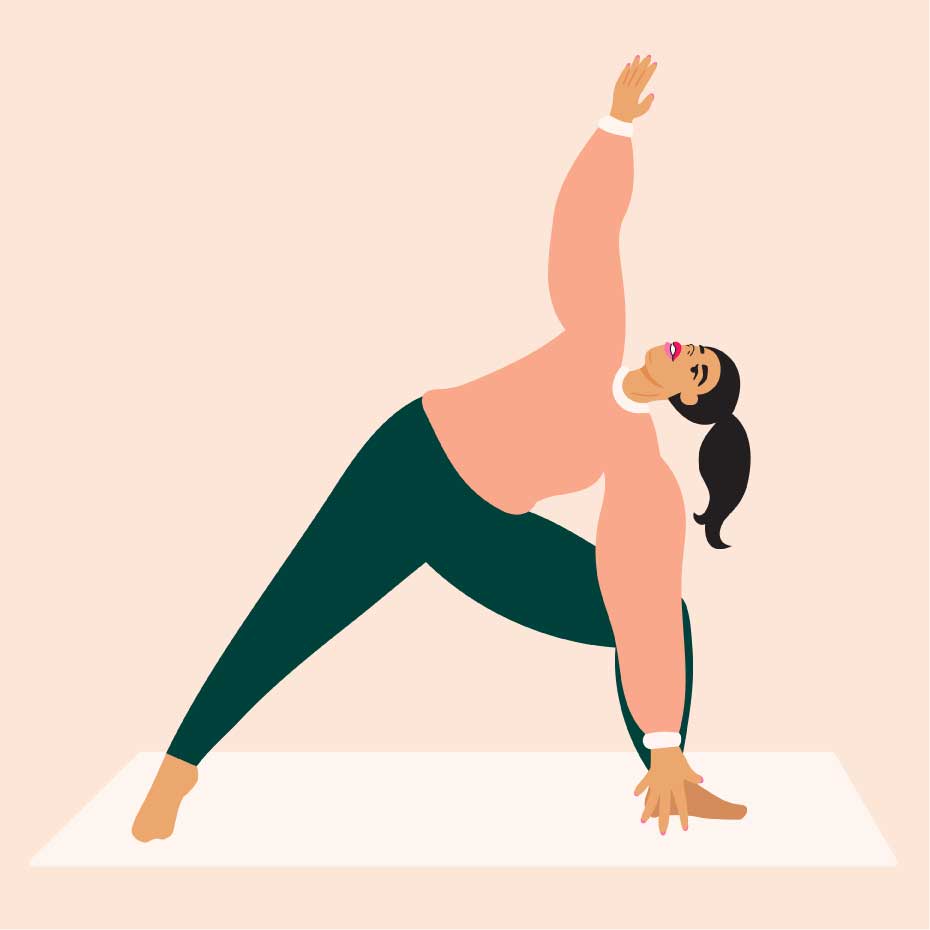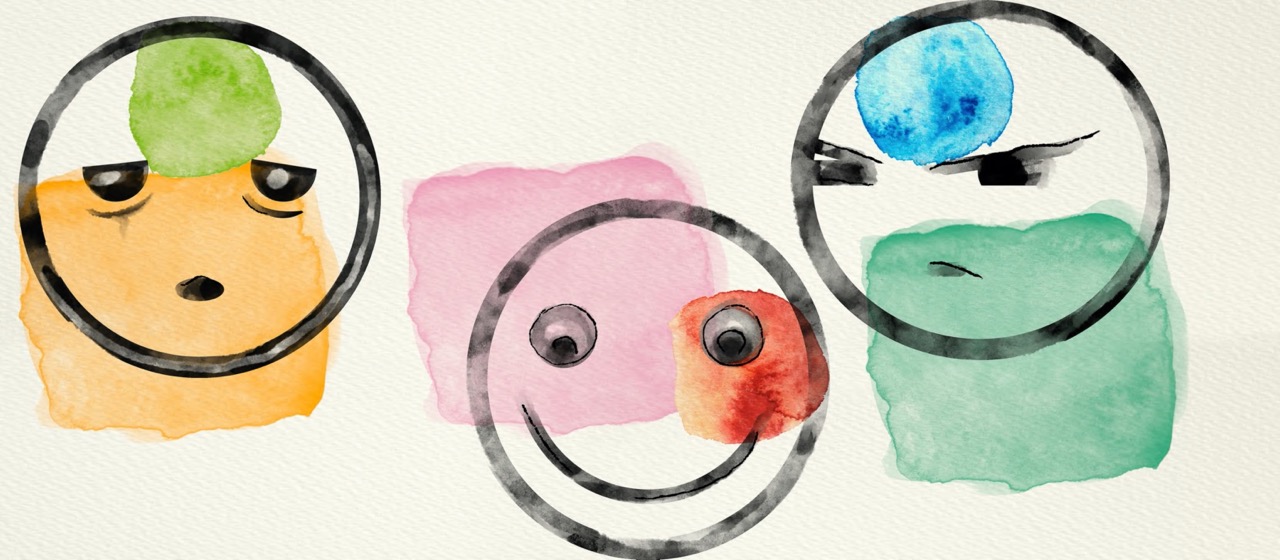Feeling & Processing Emotions
Feel it and let it go
Accept and process your emotions
Emotions are natural, physiological responses to our interactions with the world. There is no such thing as a negative or positive emotion: there are just different emotions that are easier or harder to deal with. All of them are necessary and all of them are healthy. The only times emotions become unhealthy are either when they’re repressed or when they’re taken out inappropriately against other living things (people, animals, nature).
I want to emphasize that: there are healthy and unhealthy ways to express emotions, but no emotion is bad and no emotion should ever be repressed.
The simple act of repressing an emotion is often an act of fear — we don’t express the emotion usually because we’re afraid of being shamed or of upsetting others. This means that every time we repress an emotion, our nervous system gets activated.
Moreover, if we don’t process an emotion, it stays inside of us. We may ignore it, repress it, or live in complete denial that it ever existed, but it doesn’t go away. Instead, the emotions sit inside of us and fester. They make us sick, the repression of an unacceptable emotion may trigger a big emotional outburst with an emotion that we deem more acceptable, or we may feel totally numb because everything has been repressed.
The most universal emotions seem to be grief/sadness, anger, fear, shame, guilt, and excitement, but emotions can get far more complex and they seem to be culturally driven. New research into emotions has been fascinating, and I hope to write more about what I’m learning, but for now, the most important thing is learning how to process your emotions. I’ve shared my tips below.
How to process emotions
Name the emotion
It was so weird how effective this was, but just saying something like, “I’m feeling shame,” or “I feel angry,” or “I feel grief,” was sooooooo effective. I haven’t looked into why this is the case, but it’s a tip I came across in many different sites and books, and learning to name my emotions was a turning point for me. It can be a good journal exercise too. Just start the entry with “What am I feeling right now?” Or at any point during the day, if you feel a symptom, ask yourself “What am I feeling right now?” (I got that tip from Dan Buglio .)
Silently act out the emotion
I found it surprisingly helpful to close the door to my bedroom or even a bathroom and punch at the air, pretending I was hitting someone I mad at. I would go through the motions of screaming in rage or in fear, punching at the air, pretending to shove someone back, or shaking and cowering in fear while holding my arms out to protect myself.
I would do this without actually making a sound, so no one outside the room knew what was happening. In fact, often, screaming silently and really getting your body into the motions of screaming can be just as effective as screaming out loud.
Allow yourself to scream
In total privacy, I allow myself to scream as loud as I can in fear or rage. I might scream “fuck you” to the imaginary version of the person who had pissed me off, or I might just scream at the top of my lungs like a little kid. I live in a suburban neighborhood, so if I’m alone at home, I might do this at home. I also often scream at the top of my lungs in the car.
When I first started screaming out loud, I didn’t find it as helpful as the full but silent bodily reactions. But over time I found real screaming to be necessary. It’s probably worth trying if there are emotions you’ve repressed and there are places you can go where you can safely scream as loud as you want. Again, if you don’t have places where you can scream out loud, then you’ll likely get a lot of benefit from going through the motions silently.
Learn to cry
I don’t have great tips for this one, but it’s a necessary skill for healing. It was so ingrained in me not to cry, that relearning how was one of the biggest challenges I’ve faced. For a while, I could only cry in therapy, and even then, it was rare. I occasionally cried during my JournalSpeak sessions, but I could always tell it wasn’t enough and I wasn’t getting to the core pain. It was like my body didn’t know how to form and release tears. Mostly, this one just took a lot of practice.
One thing I did was watch sad movies and TV shows and practiced allowing myself to tear up. Or I might allow myself to tear up more easily while I was reading sad news stories (which are depressingly easy to find these days). I also found that I could get to the big cathartic cries more easily if I had someone I trusted — namely my therapist or my husband — sitting with me. I suspect that crying may be an emotional release that’s deeply connected to our need for support and love from others, but that’s a space I’m still trying to learn more about.
Learn to rage
When I started JournalSpeak, these really strong angry emotions started bubbling away inside of me. I needed to do something physical. I sometimes took it out on my poor keyboard, slapping my fingers against the keys as hard I could, but that didn’t seem like a great long-term solution, and it didn’t help for the strongest feelings of anger. My therapist recommended taking one of those long foam rollers people use for stretching and hitting it against a couch or a bed. But that didn’t help. I also tried things like punching a pillow, but that didn’t help either.
Finally, for less than the cost of a single therapy session, I bought a 75 pound punching bag that could be hung up in the basement (I also bought a pair of gloves/wrap to protect my hands and wrists). When I got really angry, I’d go downstairs and start punching. What I found was that I’d rage at the bag with my fists for a bit, but then I’d need to start kicking. I *needed* the full-body anger experience, and it went through me top to bottom. In fact, I often ended session with jumping or stomping on the ground.
It’s worth noting that the idea here was to release anger, but not necessarily to punch or kick as hard as I could. I mean, I often did punch or kick as hard as I could, but the goal wasn’t for me to get stronger or better at punching and kicking. So for me, the lighter bag was fine (and cheaper and easier to manage). I also want to emphasize that I needed it because I’m basically incapable of expressing my anger. I’m not sure if the punching bag would be as useful for someone who already expresses (or over-expresses) their anger. If you’re also bad at expressing anger and want to try the punching bag but haven’t had previous training, I recommend looking up some martial arts and kickboxing videos to learn proper technique so that you don’t hurt yourself. I’d done some martial arts as a kid, but I still found the videos helpful.
If you can’t afford a punching bag or if you don’t have space for one, doing all of this to the air is also still helpful and a good alternative. As I progressed through my recovery journey, I also found that I often needed to get in a car, drive to a place with fewer people, and scream and rage at the top of my lungs.
The important thing is to recognize that you might very well need to really rage out, and you want to figure out a safe way to do that.
Somatic tracking for emotions
Often, simply identifying the feelings and sensations that are coming up in your body that are coming up and then sitting with them and feeling them fully until they dissipate may be all you need. I found that grief, rage and terror usually needed physical releases, but anger, sadness, and fear could be dissipated by sitting with them and feeling the impact they had on my body.
For example, sadness might include feeling pain and tightness in my chest, with or without tears. Anger might feel like all of my muscles tensing up, as if readying for an attack. Fear might include repeatedly holding my breath and shaking until it felt safe to breathe normally again. For me, shame felt very similar to fear, and somatic tracking with shame was one of the only techniques I found that enabled me to feel and process that particular emotion.
The important thing is to sit with the emotion and all your body to do and feel what it needs. This is also something that could be done during a JournalSpeak session or Parts Work. Especially during JournalSpeak, you can write out everything that’s happening inside your body, as you feel it, which can be a helpful way of acknowledging it and processing it.
The core emotion
Sometimes, especially during a JournalSpeak session, I would feel a feeling, but it didn’t help. That usually meant I hadn’t gotten to the core issue. Often, I could tap into sadness, but if I didn’t feel physically better, then it usually meant there was anger, fear, or shame underlying the sadness. Later as I started getting better at accessing my repressed anger, I learned that if a big release of rage didn’t make me feel better, then there was probably shame underlying that. Shame often sat atop anger or sadness or excitement, etc.
In fact, I especially found that to be the case with depression and anxiety. If I felt either of those two things, that meant there was a core emotion or issue that was festering in me that I hadn’t figured out how to access yet. So if you feel like you’ve had a big release and you don’t feel physically better after, or if you feel depressed or anxious, there’s likely an underlying core emotion that you still need to access and release. Emotions often come in layers and it may take a little time to get through all of them.
Use your imagination
If you’re processing an event from your past where you had to repress big emotions, your imagination can allow you to go back and relive the event in a way that helps you heal.
For example, you could imagine letting your emotion have its way. First, remember that your emotion is not you, and you’re just using your imagination and you would never do this in real life. Then, sitting on a chair with your feet on the ground, close your eyes and see what the emotion wants. If you go back to the scene in your mind and you’re filled with anger, your anger may want to attack the person you’re with or possibly even kill them. Allow your body to tense up and let the emotion and your imagination have their way.
Alternatively, if you’re feeling grief, you may want to close your eyes and imagine giving the person one last big hug. You might even have a big cry with them as you imagine holding them tight.
Another option is to go back to an upsetting scene and imagine the outcome you wish had happened. This might involve your adult self stepping in to defend your child self, or might involve not saying something you wish you hadn’t, or it might involve getting up and walking away, or it might involve the other person saying what you wish they had said, or any number of options that would result in the outcome to the event that you wish had occurred.
For any of these, you’ll likely still need to allow the emotion to move through, but by imagining the event, you’re giving the emotion an outlet it didn’t have at the time.
Feeling emotions does not mean taking them out on others
Feeling or expressing emotions should never involve hurting others physically or emotionally. If you’re raging out on loved ones or crying in the middle of work meetings, there are probably other emotions and deeper issues, but your nervous system is using these emotional outbursts as a way of hiding from those deeper issues. I recommend using JournalSpeak to identify what’s happening at a deeper level, and then practice the suggestions above — or something of your own creation! Although you may benefit from having support from loved ones or a therapist to process some emotions, no one should ever be hurt as you work through your old, emotional wounds.
Sleep
I often did my JournalSpeak practice at night, and tough emotional issues would arise right before bed. If I couldn’t fully process the issue that night, I would reassure myself that I could come back to it the next day and do more work then. This would help me fall asleep, no matter how upsetting the issue or emotion was. However, more often than not, by the next day, I was fine with whatever the issue was, and I didn’t really have more to process.
I finally asked a therapist about this, and it turns out that scientists are finding that one of the key roles of sleep may be to help us process emotions. In fact, as this journal article from 2018 states, “A growing body of literature suggests that sleep plays a critical role in emotional processing.” And more science has continued to come out since then suggesting the same thing.
As far as I’m concerned, this is one more reason for people with chronic illness to rest as much as possible, and don’t worry if processing emotions seems to make you even more tired: think of it as your body’s way of helping you process these big emotions.
Exercise
Exercise is often touted as a way to deal with emotions. Advice you might hear can include things like: Feeling angry? Go to a kickboxing class. Stressed about work? Go for a jog. Etc.
What I found was that, while my nervous system was way too overactive, and while my core issues were still repressed, exercise made me worse. It added extra physical stress that my body couldn’t handle, and the movement often triggered the release of emotions that I wasn’t prepared to deal with. All of this could send my body into a freeze state and increase symptoms. Instead, I kept movements simple, like qi gong and yin yoga and walking, and I only did that when I was up for it.
When I finally got through most of my core issues, I suddenly felt the need to start working out. And at that point, exercise was critical for releasing emotional energy. But I had to get through the other work first and get my nervous system to a calmer state.
Learn more
In the articles below, I dive deeper into topics, tools, and techniques regarding this component of healing. This is where I share what I did to heal and where I’ll add updates as I learn new information on these issues. So make sure to look through these posts as well.
Other Resources
The Healing Pathways Newsletter
Get the latest posts and information about how to heal and reset your nervous system by signing up for the newsletter.








